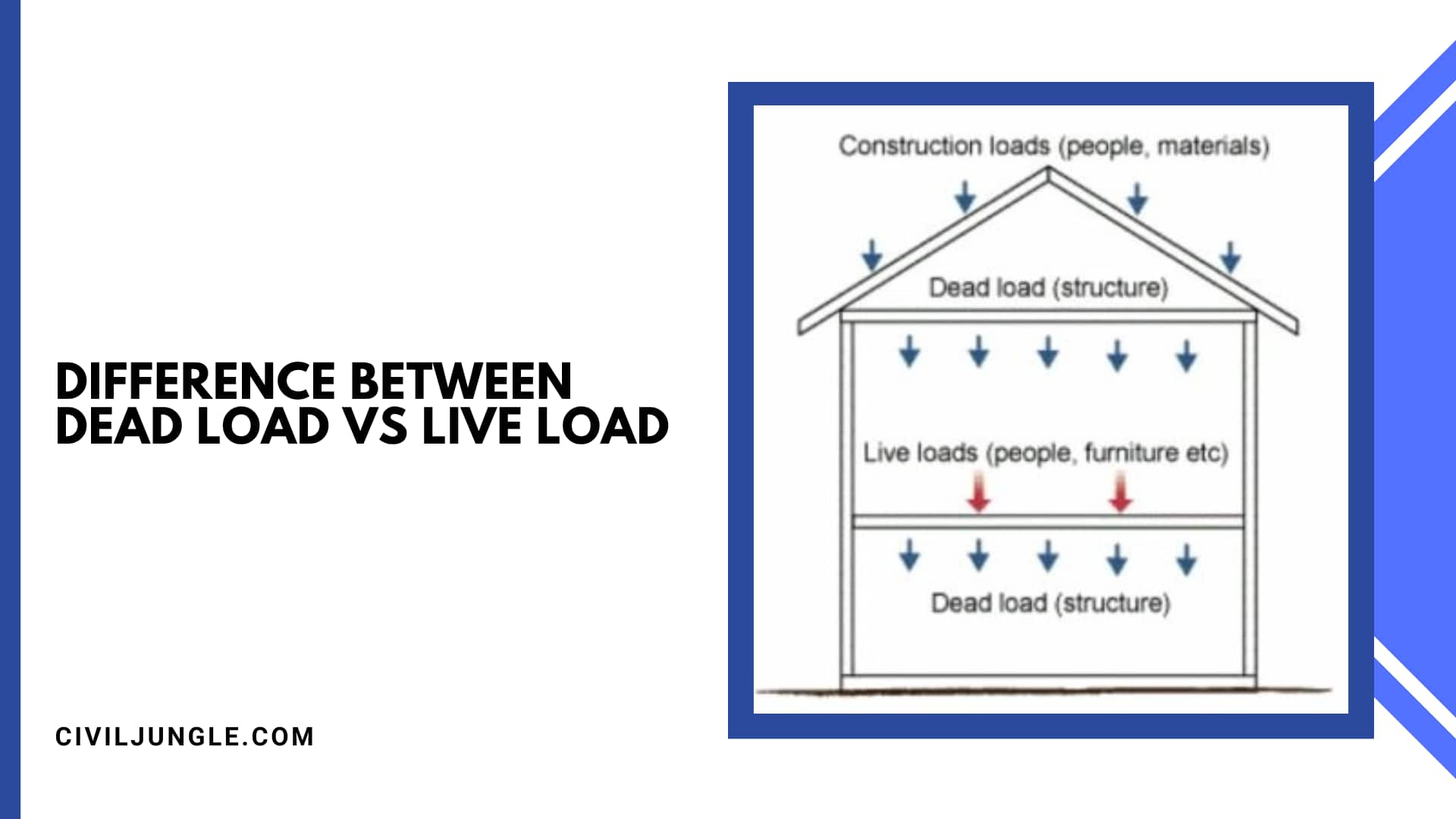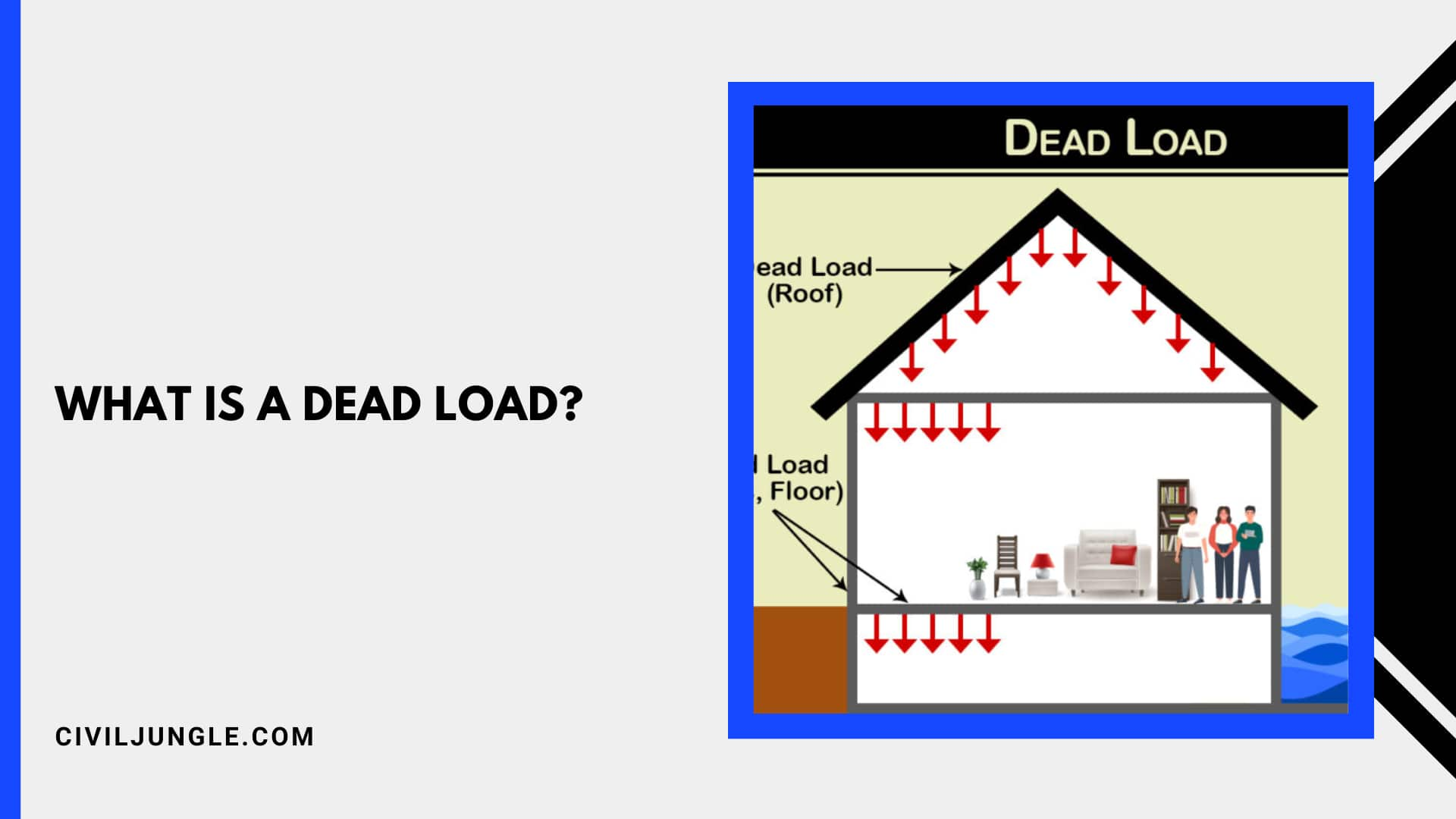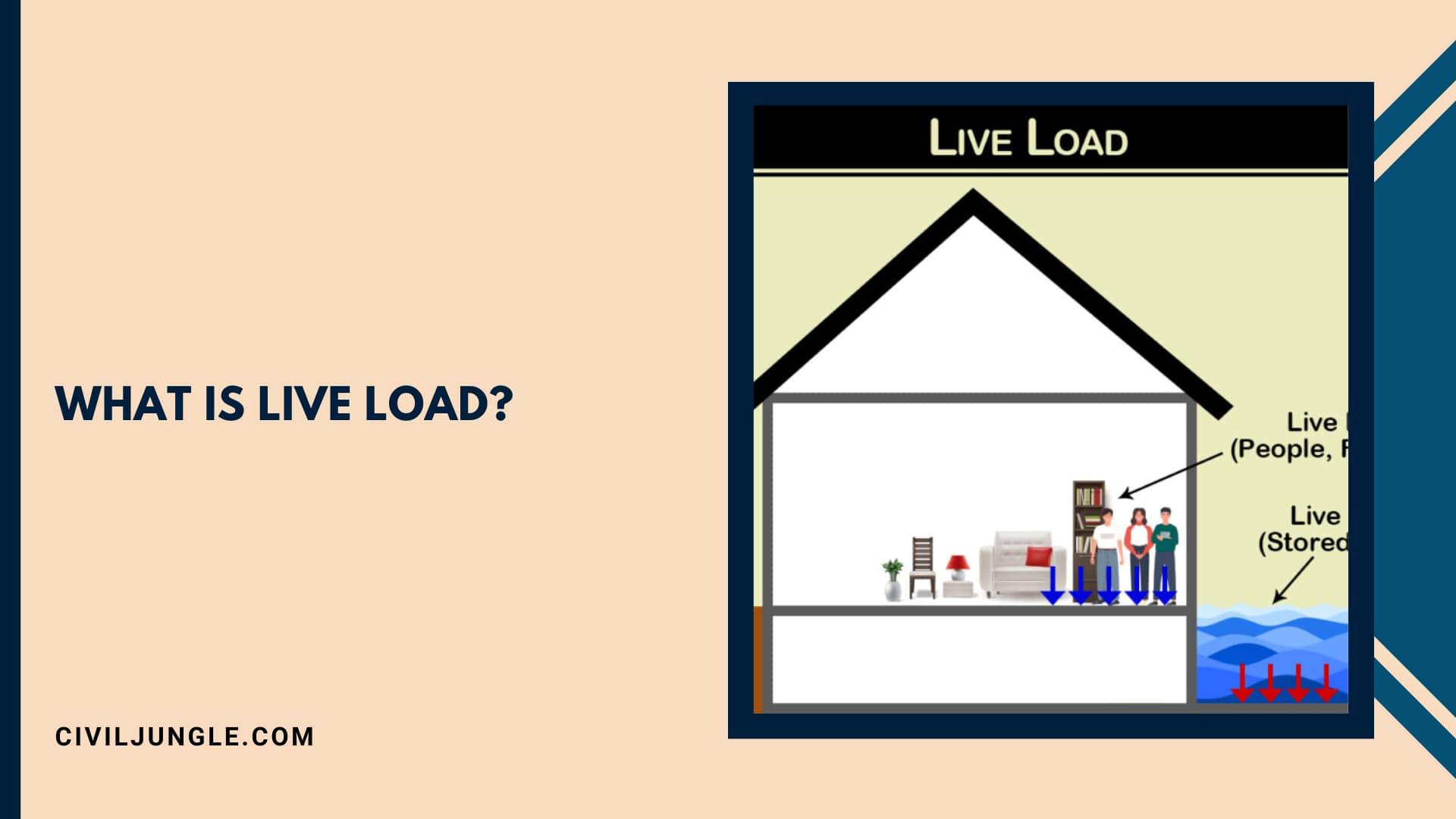What Is a Dead Load?
Important Point
Dead loads are considered permanent or static loads. The dead load in the building continues to increase over time.
The dead load includes the weight of various structural parts of the building, such as concrete beams, walls, ceilings, structural flooring components, doors and windows, furniture, etc.
In addition, dead loads can include permanent structural partitions, immovable fixtures, built-in cupboards, kitchen platforms, etc.
Dead loads can be as stress or compression in a static building. It is used to calculate dead load in laboratory testing methods and building design.
Dead loads in any structure have their full weight in the building. Dead loads usually form a static load in floors, walls, ceilings, columns, stairs, permanent devices, etc., in any building, which do not change during the life span of the building.
The construction of buildings depends on the structural load. So building codes require that the building safely resist all actions during its life span. Structures are designed by calculating all loads and taking into account their use.
Dead load on a structure Permanent elements such as beams, floor slabs, walls, and columns produce a ‘dead’ load during the lifetime of the building. Dead loads seem to be due to gravity. So the calculation of the time of its building design is done.
Dead load = Volume of member x unit weight of material
The exact dead load is determined by calculating the volume of each member in the building and multiplying the unit weight of the material made from it.
| Sr. No | Material | Unit Weight kN/m3 |
| 1 | Mild steel | 77 |
| 2 | Glass | 25.5 |
| 3 | Plain Cement Concrete | 23.5 |
| 4 | Reinforced Cement Concrete | 24 |
| 5 | Timber | 5.0-8.0 |
| 6 | Brick Masonry | 18.8 |
| 7 | Plain Cement Concrete | 23.5 |
Examples
Find the live load from the figure shown below.
volume of beam = 8.0 x 0.6 x 0.3 = 1.44 m3
The unit weight of reinforced concrete is 24 kN/m3.
A dead load of beam = volume x unit weight
= 1.44 m3 x 24 kN/m3
= 34.56 kN.
Also Read:
What Is Live Load?
When asking what is a live load, it’s the load that includes some of the building’s moving objects and people. Such as people, desks, closets, filing cabinets, etc., create an emphasis on the design of the structure.
This load varies from time to time. And its intensity also changes significantly over time. One room may be empty at a time in different classrooms. Other classrooms may be full of people. The additional load in the live load is calculated.
Live load is the load generated by the dynamic forces for business and desired use. They represent dynamic forces that can be moved into a building or performed for any specific work structure. This load includes people, furniture, appliances, migration devices, and automobiles.
According to ASCE (American Society of Civil Engineers), the value of the minimum live load required in the design should always be kept higher than the maximum expected live load during the lifetime of the building.
Live loads are indicated according to use per business and building type as per ASCE guidelines. Live load always depends on the structure.
Live loads depend on structural strength. Therefore the live load is calculated according to the specific use of the building.
All unfixed items in the building generate a ‘live’ load on the structure. Live loads depend on usage and capacity.
The live loads for different buildings are as follows.
| Live loads for different buildings | Uniformly distributed load kPa or kN/m2 |
| Houses | 1.5 |
| Parking, vehicle > 2.5 t | 5 |
| Offices | 3 |
| Dance halls, bars, lounges | 5 |
| Flats, apartments, motel bedrooms | 2 |
| Hospitals, school assembly areas | 3 |
| Workshops | 5 |
For Example,
Find the live load from the figure shown below.
Area of floor = 8.0 m x 4.0 m = 32 m2.
The live load of a house = 1.5 kPa.
Therefore, the live load of the floor = 32 m2 x 1.5 kPa = 48 kN.
Environmental Load
Environmental load affects the structure through topographic and external weather conditions.
Wind Load
The wind load is applied to the structure of the building by the movement of air. Therefore, analyzing meteorology and aerodynamics is essential for the structure of a building.
Calculating the wind load for small and low-rise buildings, in general, may not be a significant concern, but when using lighter materials and shapes for high-rise buildings the air load is affected.
Where the dead weight of the building structure is unable to withstand the wind load, additional structures are required.
The intrinsic value of wind speed in the design of a building is determined from historical records. In complex situations, changes in airflow are assessed for the structure of the building. And wind testing for building design.
Also Read:
Snow Load (SL)
Snow load is caused by the accumulation of ice. Snow load is a concern in snowy geographical regions. Because snowfall is heavy and frequent in such an area. The accumulation of ice increases the size load in the structure.
The shape of the roof plays a particularly important role in resisting the intensity of the snow load. Snow falling on a flat roof is likely to accumulate on the roof. When the snow in the pitched roof slides over the roof.
Earthquake Load
Significant imposed loads can occur on the structure of a building during an earthquake. The design of buildings in areas of seismic activity needs to be carefully analyzed and the structure of the building needs to be designed in such a way that it does not fail in the event of an earthquake.
Thermal Loads
The material of the building structure has the property of expanding with the change in temperature. This causes a significant load on the structure.
Expansion joints are provided on the long span of structures such as walls and floors. So that the elements of the structure can function physically differently and expand without damaging the structure.
Also Read:
Difference Between Dead Load Vs Live Load
When looking at the difference between live load and dead load, or vice versa, the difference between dead load and live load, one can see that dead loads are static forces that are constant for a long time. They can also be Tension or compression. Live loads are usually migration loads.
These may include properties such as impact, motion, vibration, etc., by significant dynamic elements. In the example of a live load bridge, live activity changes due to a change in vehicle behavior or external forces.
In the example of a dead load bridge, the load is transferred to the bridge support due to the bridge’s weight in which the weight of the bridge is the constant load.
Dead loads on structural permanent elements such as beams, floor slabs, walls, and consoles generate ‘dead’ loads during building training. Live load is the load generated by the dynamic forces for business and desired use.
Like this post? Share it with your friends!
Suggested Read –
- Types of Pitched Roof
- SPC Flooring Installation
- Weep Holes in Retaining Wall
- What Is a Gambrel Roof Design?
- Best Roof Coating for Metal Roof
What Is a Dead Load?
A dead load is the permanent, static load applied to a structure. It includes the weight of the structural components and fixed elements, such as concrete beams, walls, floors, ceilings, doors, windows, and immovable fixtures.
What Is a Live Load?
A live load includes the dynamic forces applied to a building, such as the weight of people, furniture, appliances, and movable objects. Live loads vary over time and depend on the building’s usage.
What Is an Environmental Load?
Environmental loads are forces applied to a structure due to natural conditions such as wind, snow, earthquakes, and temperature changes.
How Does Wind Load Affect Buildings?
Wind load applies pressure on the building structure, which must be designed to withstand these forces, especially for high-rise buildings and those with lightweight materials.
Why Is Snow Load Important in Building Design?
Snow load impacts the structure’s ability to bear the weight of accumulated snow, particularly on flat roofs. Design must account for snow’s weight to prevent structural failure.
How Do Earthquake Loads Influence Building Design?
In seismic zones, buildings must be designed to absorb and dissipate earthquake forces to prevent collapse and ensure safety.
What Is Thermal Load?
Thermal load refers to the stress on a structure caused by the expansion and contraction of materials due to temperature fluctuations. Expansion joints are often used to mitigate these effects.
How Do Dead Loads and Live Loads Compare?
Dead loads are constant and static, representing the weight of the building’s permanent components. Live loads are dynamic and variable, representing the weight of movable objects and occupants within the building.
What Is the Significance of Calculating Dead and Live Loads?
Accurately calculating dead and live loads ensures the building’s structural integrity, safety, and compliance with building codes throughout its lifespan.




Leave a Reply